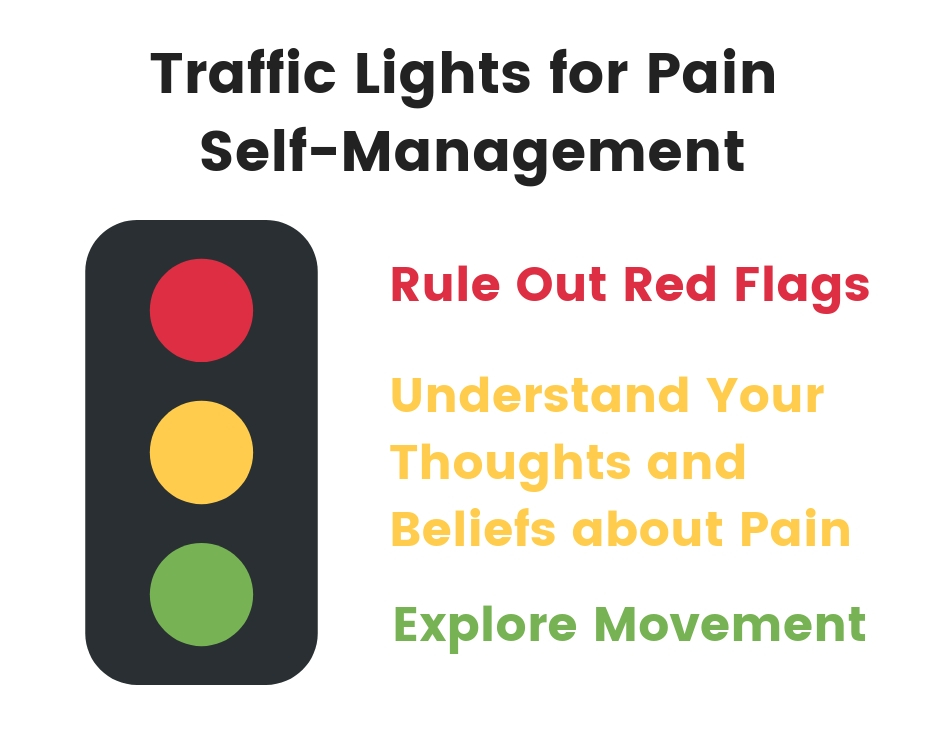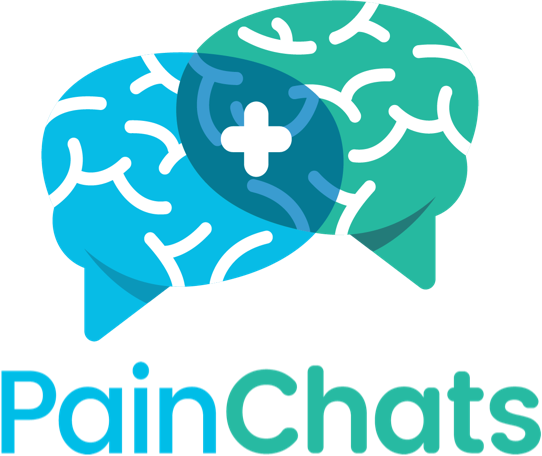Trapped in a world of hurt: my experience with back pain
“Nothing in life is to be feared, it is only to be understood.
Now is the time to understand more, so that we may fear less.”
-Marie Curie

When I was in my twenties, I had days, weeks, and months of continuous back pain.
I had trouble doing normal daily activities, like chores around the house or tying my shoes. I was young, constantly in pain and worst of all…
I had no idea what I should do to get better.
Fast forward twenty years.
Through years of medical training (and curiosity!), I have learnt many important things about the amazing human body. Most importantly, I learnt about pain, and why it persists.
Most people, including physicians, think they understand pain because it seems to be very simple.
Step on a tack or put your hand on the stove, and pain happens!
Seems obvious, right?
When I think back to my twenty-year-old self, I can feel the fear, anxiety and uncertainty that comes with persistent pain. Before my experience, how could I ever have known that back pain would bring me to my knees, desperate for relief for months on end? What were these sudden bouts of back spasm that seemed to come without warning? They were scary.
Was this cancer? Was I doomed for it to continue? Was I destined for back surgery? These kinds of thoughts were constantly looping through my mind and it was hard to push them out.
I hope that the understanding of pain that I have developed through my medical training and my life experience is useful for people in pain. It is something that I can offer to my patients in the clinic, to the people I reach online, and to you, reading this story.
When to stop and when to go? The traffic light approach for chronic pain
Through self-treating my own pain, and helping thousands of patients recover, I have developed the following “traffic light” approach to help people move towards recovery.

RED LIGHT: Rule out Red Flags
Red flags are signs or symptoms underlying serious medical conditions that need to be ruled out, once pain has made you visit your health care providers.
Not knowing the cause of pain can drive you into an endless panic that can actually make the pain worse.
That fear or anxiety can be soothed by ruling out red flags initially with a primary care physician. I wrote a whole post on red flag conditions so you can understand them thoroughly.
YELLOW LIGHT: Emotions, Thoughts and Beliefs
Ok, so you ruled out red flags, but here’s the kicker. Many physicians are not well-trained in helping you understand how to approach pain with better skills.
Your body is miraculous. It is strong and resilient. It is designed to protect you. However, your body is also very complex, and there are many things that can magnify your pain.
For example, when you are stressed, anxious, or depressed, unconscious brain processes detect the world around you as more threatening. Your protective systems are ramped up in an attempt to keep you safe, which can increase the amount of pain you experience.
Knowing more about pain is critical to change the way you interpret your pain and how you speak to yourself. Finding a pain science trained professional to help you understand pain can take time. Learning about pain through qualified resources, such as the book Explain Pain, and blogs like PainChats is a great place to start. This can help you understand what to do to help yourself or even how to best go about finding the right healthcare provider.
People in pain rarely get the information that relates to all of the complex causes of persistent pain. Multiple interacting things contribute to your pain experience, such as:
- Did that pain remind you of a past traumatic experience?
- Did you not sleep well the last few nights?
- Are you strained in your marriage or close relationships?
- Do you have the weight of the world on you to provide for your family?
- Do you feel depressed from losing a loved one?
- Are you lacking a variety of daily movement or good nutrition in your life?
It is possible for all of these scenarios to increase pain. Pain is part of your body’s built-in alarm system. Remember that the purpose of such a system is to look out for you and keep you safe. Trying to understand it can be difficult and confusing at times. Pain is almost never caused by only one thing. There are usually many factors to consider, and many of these factors are not medical. Pain exists in the context of your whole life experience.
It’s important to understand that when we talk about these “yellow flags” which are social and psychological factors, we are still talking about real things that happen in your body. Thoughts, beliefs and life circumstances all have a strong impact on your hormonal and immune systems. Consider how you feel when you’re worried about something – you feel it in your body, right? Stress hormones like adrenaline and cortisol affect all systems in your body, and have a strong link to pain.
GREEN LIGHT: Move and Explore

At this point, you have the reassurance that you’re safe. You know that there isn’t a disease or illness causing your pain and you’re beginning to understand that your pain is not necessarily an accurate indicator of the amount of damage in your body. Hopefully, it’s even becoming clear that pain is heavily influenced by your lifestyle, thoughts and beliefs. It’s time to strengthen this knowledge by putting it to the test. Here’s what worked for me and what I recommend to my patients.
Avoid bed rest.
Explore your pain with gentle and progressive movement. Sometimes, there might not be enough variety of movement for your body. Is there a particular position or activity you do every day or frequently? Try to move your body in the opposite direction of what you do repetitively. So if you sit a lot, stand up frequently and do some gentle backbends while you raise your arms over your head. Sometimes your body as a whole (e.g. muscles, tendons, and/or nerves) gets too tight from lack of movement. I have definitely seen this happen in patients when they have gotten used to guarding or tensing their bodies all the time, thinking it protects them.
I have had to gently work through a range of motion that seems painful at first, and I have guided many patients through this process. It’s not forcing your body to do anything, but a gentle exploration in a particular direction. If there is a positive change, despite how small it may be, then I tend to repeat those sessions. This allows your body to become accustomed to that uncomfortable movement, while dissolving any fear or uncertainties you might hold about moving that way.
Sometimes your body is being stressed or overused in a limited number of ways. Your body can get tight in certain places due to strenuous and repetitive activity. You might have to modify (not quit!) a certain activity to give certain areas of your body a break. This also gives your nervous system a rest from being on high alert and allows that area to calm down. I have had to do this throughout my life when pain emerges, to keep it from spiraling out of control. It might mean temporarily changing or modifying an activity, or even simply reducing the amount I do for a while. But I never stop moving.
When pain speaks, you should listen

Pain is one of the ways your body makes itself heard.
What is your pain trying to tell you?
Are you overly stressed? Eating and sleeping poorly? Are you neglecting important relationships and not taking enough to time to do things that give you pleasure and joy? When I eat processed foods, do not get enough
At first, you might need help getting started with the movement strategies discussed above, along with paying attention to your psychology and lifestyle factors like sleep and nutrition. If you need help moving and exploring, find a pain-science trained professional to help you discover the ideal movement strategies. It takes a little trial and error at times. If one approach is not successful at relieving pain, it is still helpful in incrementally devising a more ideal strategy. It is good information to understand your body and what it needs.
Your pain education and engaging less in fearful self-talk are critical parts of your journey of overcoming pain playing a dominant role in your life. Developing a healthy relationship with pain means understanding that pain is there to guide you. The right advice about pain will lead you to a healthier version of yourself and guide you towards pain mastery.
There is no doubt that the approach outlined above has helped me and many others feel okay with not having a perfect looking spine in a MRI, a perfect posture or an occasional frustrating bout of pain. I am more resilient and less fearful when faced with pain.
You can also feel less fearful about pain and take back control over your life. It begins by ruling out red flags with your physician, learning more about pain, and learning what you can do about it.
It is a journey that requires patience, the right education and sometimes outside help or accountability.
Melissa Cady, D.O. is an American-trained osteopathic physician who is dual board-certified in anesthesiology and pain medicine. Melissa’s path has been unique with her history as a personal trainer, a physical therapy aide, and managing her own persistent pain. Known as the Challenge Doctor, Melissa wrote PAINDEMIC: A Practical and Holistic Look at Chronic Pain, the Medical System, and the antiPAIN Lifestyle, and created the Pain Out Loud website to help those in pain with more holistic and educational approaches to pain treatment.



 This Spine Surgeon says “Avoid Spinal Surgery for Low Back Pain”
This Spine Surgeon says “Avoid Spinal Surgery for Low Back Pain”
